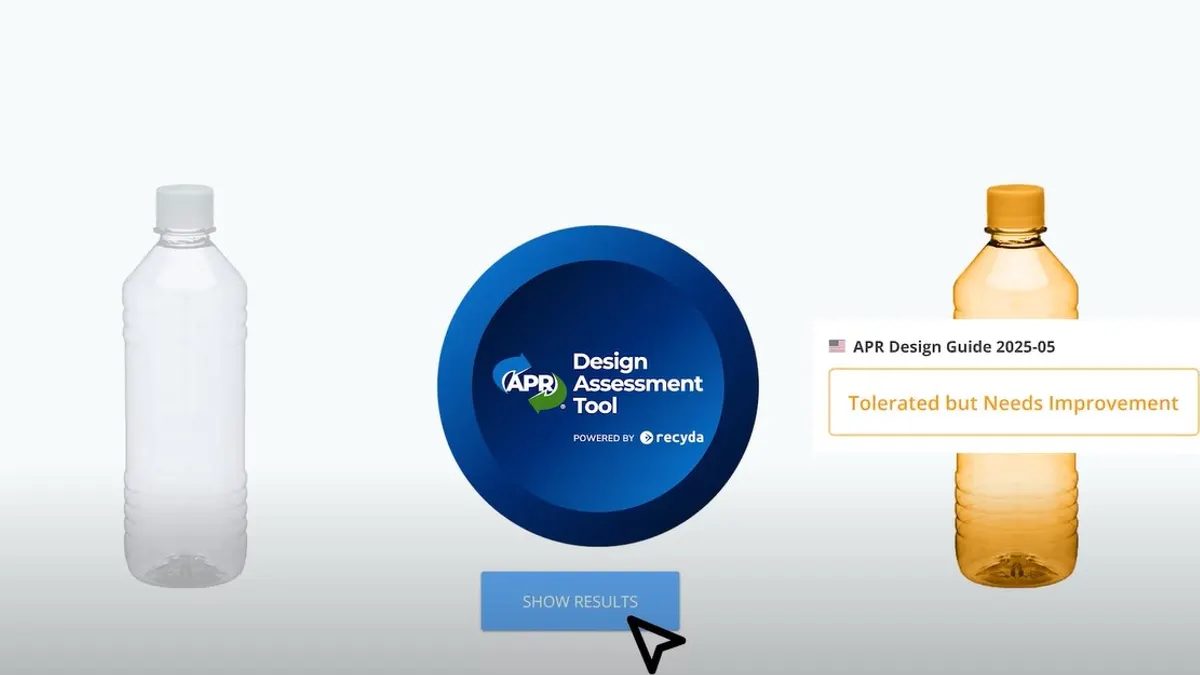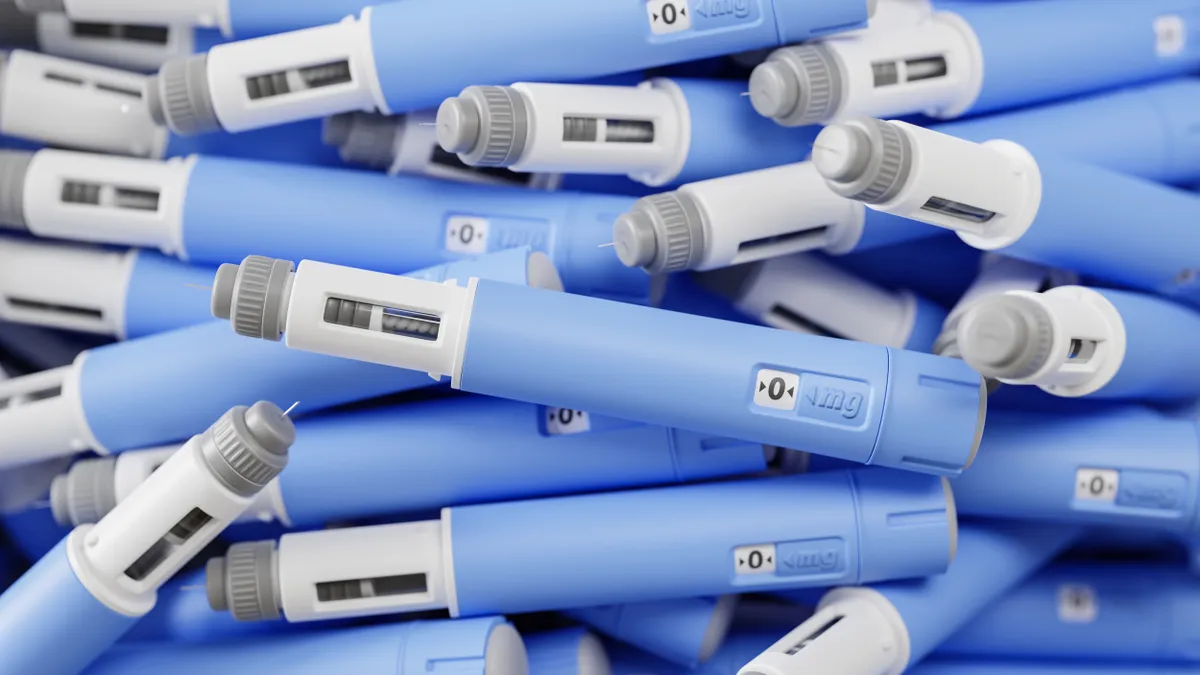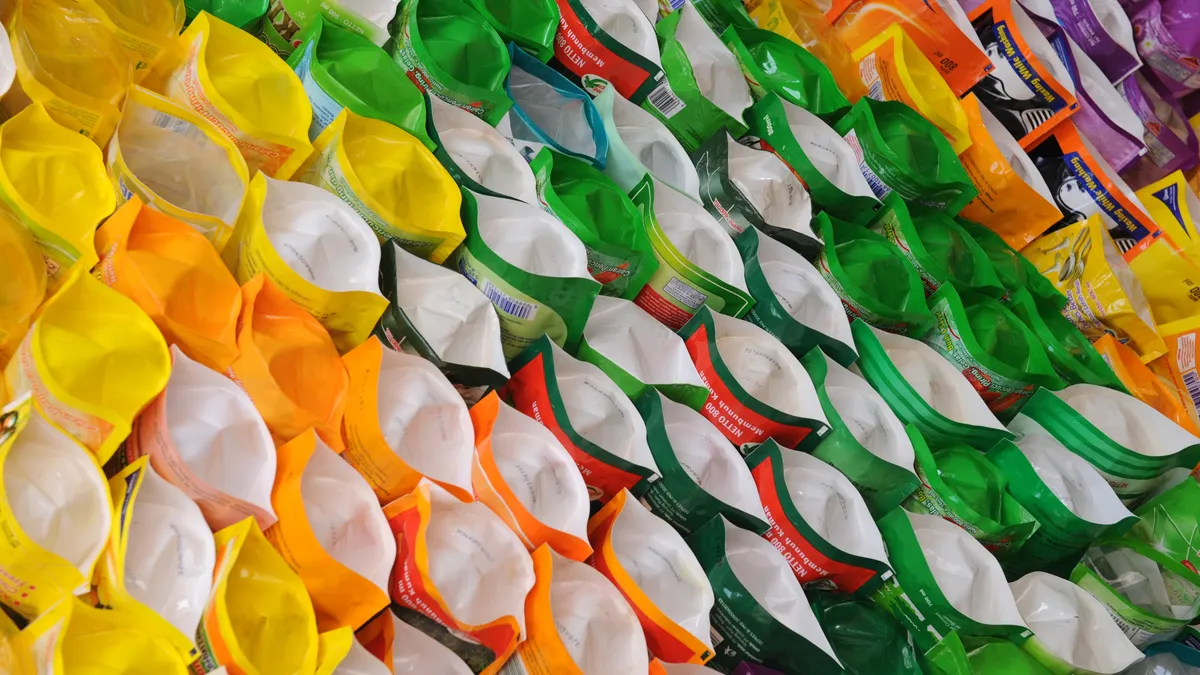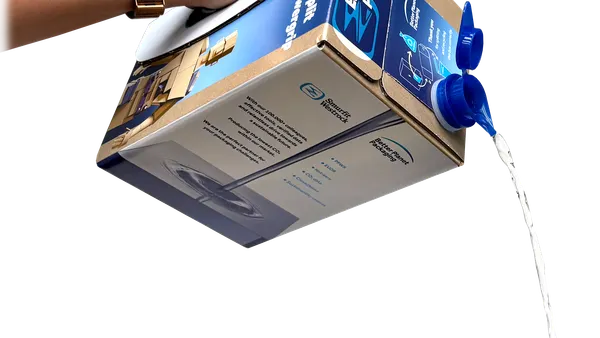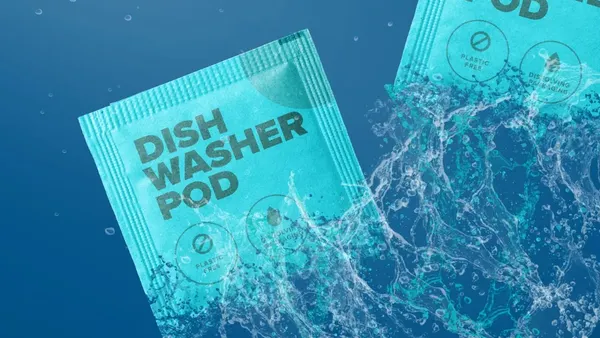Dive Brief:
- The Association of Plastic Recyclers is launching a new platform in early 2026 designed to help companies assess the recyclability of an entire package — taking into account elements such as base resin, color, adhesives, inks, barriers, closures, labels and dimensions — rather than just looking at individual packaging components. The group made the announcement Tuesday at Pack Expo in Las Vegas.
- Working with German packaging management software company Recyda, APR’s Design Assessment Tool incorporates live updates from APR’s longstanding Design Guide for Plastics Recyclability.
- The digital platform will help companies prepare for upcoming legislative and regulatory reporting requirements, such as for extended producer responsibility for packaging laws, “as policies rapidly evolve across states and countries,” APR says.
Dive Insight:
The Association of Plastic Recyclers’ Design Guide for Plastics Recyclability has been “the gold standard for recyclable plastic packaging design” for more than three decades, said Steve Alexander, APR President and CEO, in a statement. The guide is even written into California’s SB 343 labeling law, which stipulates that plastic packaging not include any pieces that prevent its recyclability according to the APR Design Guide.
“This new tool takes that legacy to a new level — giving companies a one-stop solution to improve recyclability and compliance while saving time and money,” Alexander said.
APR members had been asking for a tool like this, according to Sarah Bradshaw, program director for the APR design guide, while speaking with Packaging Dive at Pack Expo on Tuesday. While other organizations’ tools reference APR’s design guide, this one — the first to be managed by APR — will continuously and automatically refresh with the most up-to-date information from the design guide. Project partner Recyda has experience with similar efforts in Europe, Bradshaw said.
The tool will help users optimize packaging for recyclability, signal missing data, reduce compliance risks and help forecast EPR fees, according to the trade association. By streamlining packaging data management, the tool will aid with minimizing errors and related costs as well as back-and-forth interactions with suppliers, APR says.
Bradshaw emphasized the scalable options for participation: APR will offer three subscription levels for platform use, but it has not yet disclosed the associated costs. The highest tier will also let users evaluate non-plastic packaging across more than 20 countries. APR hopes that when companies invest in these assessments upfront, it will ultimately help them optimize EPR reporting and fees, Bradshaw said.
Maria Rachal contributed reporting to this story.



